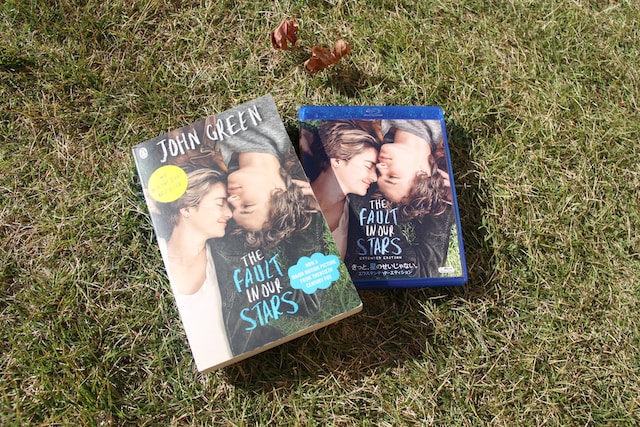Introduction
As society becomes more inclusive, examining classic literature through a queer lens has become increasingly important. From the romance of friendship to the liberation of love, LGBTQ+ themes have been present in American literature for centuries. These themes not only reflect the experiences of marginalized individuals but also offer insight into the societal attitudes towards gender and sexuality during different periods in history. Join us as we explore some of these iconic works and discover how queering the canon can reveal new depths within these timeless classics.
The Romance of Friendship
The Romance of Friendship
One of the most common themes that can be found in classic American literature is the portrayal of deep and meaningful friendships between characters. These relationships often go beyond mere platonic connections, as they are characterized by a profound emotional bond.
In many ways, these literary depictions of strong friendships can be seen as early examples of queer representation in literature. While not necessarily romantic or sexual in nature, these relationships often blur the lines between what we consider to be traditional expressions of love and affection.
From Huck Finn and Jim’s unlikely friendship on their journey down the Mississippi River to Ishmael’s bond with Queequeg in Moby Dick, there are countless examples throughout classic American literature where friendship takes center stage.
It’s worth noting that many LGBTQ+ individuals have historically found community and support within close-knit circles of friends rather than through romantic partnerships. In this way, iconic literary friendships can serve as powerful symbols for those seeking solidarity and acceptance within their own lives.
The Liberation of Love
In classic American literature, love was often presented as a binary concept between a man and a woman. However, with the emergence of LGBTQ+ themes in literature, writers began to explore the idea that love knows no gender or sexual orientation.
One example can be found in Herman Melville’s “Billy Budd,” where the titular character is praised for his beauty by both men and women aboard his ship. While never explicitly stating Billy’s sexuality, Melville hints at the possibility of same-sex desire.
Another example is found in Willa Cather’s “My Antonia,” where protagonist Jim Burden develops an intense emotional connection with his childhood friend Antonia Shimerda. While their relationship never becomes physical, Jim describes Antonia as having “the warmest heart” he had ever known.
These depictions of non-heteronormative love challenge societal norms and demonstrate that love is not limited to traditional ideas of romance. They provide representation for those who may have felt marginalized or invisible within literature and society as a whole.
By exploring these themes, classic American literature has opened up new avenues for readers to understand the complexities of human emotion and relationships beyond heteronormativity.
Gender and Sexuality in Literature from the 19th Century
The 19th century was a time when gender and sexuality were not openly discussed, but they were present in the literature of the time. Writers used ambiguous language to talk about same-sex relationships, often hiding them behind euphemisms or metaphors. For example, “romantic friendship” was a term used to describe close relationships between women that could be interpreted as homosexual.
In Nathaniel Hawthorne’s The Scarlet Letter, there are several instances where gender and sexuality are explored through the characters. Hester Prynne is punished for her adultery with the minister Arthur Dimmesdale and bears his child out of wedlock. This raises questions about societal norms regarding sex and marriage.
Another classic novel from this era is Herman Melville’s Moby-Dick which has been analyzed by many scholars for its queer undertones. Ishmael’s relationship with Queequeg can be seen as homoerotic, especially given their shared bed and intimacy throughout the story.
However, it is important to note that these themes weren’t always explicitly stated due to censorship laws at the time. Edith Wharton’s Ethan Frome tells of an unfulfilled love affair between two married people who cannot act on their feelings due to societal expectations.
Although not all writers addressed issues related to LGBTQ+ identities during this period in history directly; it doesn’t mean that such topics did not exist in literary works during those times.
Conclusion
In examining the themes of LGBTQ+ in classic American literature, we are reminded that love and sexuality have always been a part of human experience. Though often excluded or erased from traditional narratives, queer stories are just as valid and important. By queering the canon, we can challenge dominant cultural norms and celebrate diversity.
Through works like “Moby-Dick,” “The Great Gatsby,” and “The Color Purple,” authors have explored complex issues surrounding gender identity, romantic relationships, and social acceptance. These stories remind us that love is not bound by societal expectations or heteronormative standards.
As society progresses towards greater inclusion for marginalized groups including those who identify as LGBTQ+, it’s essential to look back at our literary heritage with new eyes. Queering the canon allows us to see these texts through an alternative lens – one that values all forms of love, regardless of gender or sexual orientation.
In doing so, we embrace the rich history of queer storytelling in America while paving the way for future generations to continue exploring universal themes through diverse perspectives.










